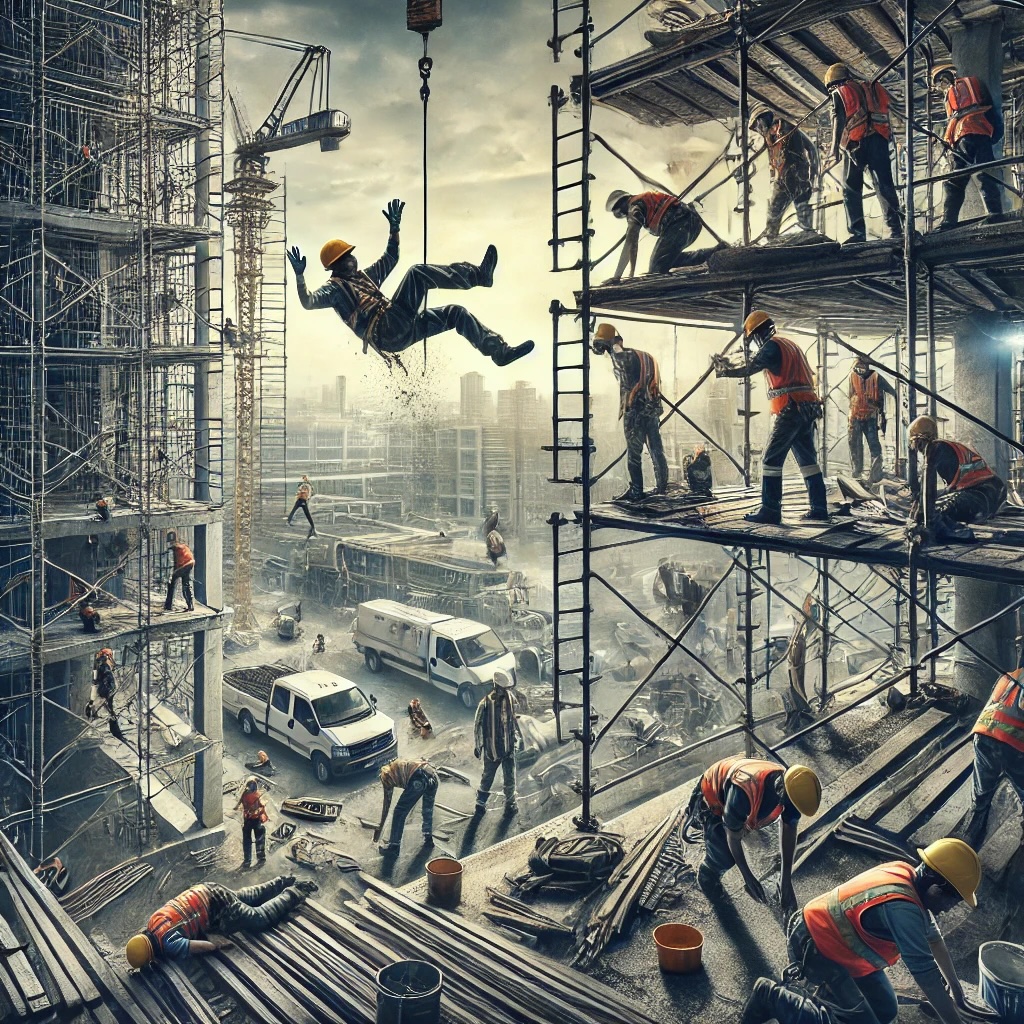Building Safely: Understanding Frequent Hazards on Construction Sites
The construction industry is inherently risky, with a wide range of potential hazards that can lead to accidents. Understanding the most common types of industrial accidents in construction can help businesses and individuals take proactive measures to prevent them.
How Big a Problem Are Construction Accidents?
- International Labour Organization (ILO) estimates that across all industries, there are over 374 million non-fatal work-related injuries annually, and many of these occur in the construction sector, which is known for its high risk of accidents.
- Construction fatalities: Globally, the construction industry typically accounts for around 20-30% of workplace fatalities, according to various studies and safety organizations. For example, in some countries, construction accounts for nearly one-third of all workplace deaths.
- In the U.S., the Occupational Safety and Health Administration (OSHA) reports that about 1 in 5 worker deaths annually are in construction, which amounts to around 1,000 fatalities per year.
- In Europe, the European Agency for Safety and Health at Work estimates that construction workers account for 18% of workplace fatalities in the EU.
- In developing countries, construction accidents are often underreported, but these regions tend to have higher injury and fatality rates due to weaker safety regulations and enforcement.

Top Types of Industrial Construction Accidents
Falls:
- Falls from heights: The most common cause of fatalities in construction, these accidents occur when workers fall from roofs, scaffolding, ladders, or other elevated surfaces.
- Falls to a lower level: Workers can also fall to a lower level, such as a basement or pit, resulting in injuries.
- Slips and trips: Slippery surfaces, uneven ground, or obstacles can lead to falls, causing injuries.
Electrocution:
- Contact with live wires: Workers can be electrocuted if they come into contact with live electrical wires or equipment.
- Faulty wiring: Improperly installed or damaged wiring can create dangerous conditions.
- Grounding issues: Inadequate grounding can increase the risk of electrocution.
**Machinery Accidents:
- Amputations: Workers can lose limbs if they become caught in machinery.
- Crush injuries: Heavy machinery can crush workers, causing severe injuries or fatalities.
- Object strikes: Workers can be struck by flying objects, such as tools or debris, resulting in injuries.
Material Handling Accidents:
- Falling objects: Heavy materials can fall from heights, striking workers or causing other damage.
- Crushing accidents: Workers can become trapped between materials or equipment.
- Lifting injuries: Improper lifting techniques can lead to back injuries or other musculoskeletal disorders.
Confined Space Accidents:
- Oxygen deficiency: Confined spaces can have low oxygen levels, leading to suffocation.
- Toxic gases: Hazardous gases can accumulate in confined spaces, posing a serious health risk.
- Entrapment: Workers can become trapped in confined spaces, making it difficult to rescue them.
Prevention Strategies
To reduce the risk of industrial construction accidents, businesses should implement the following strategies:
- Fall protection: Provide appropriate fall protection equipment, such as safety harnesses, lifelines, and nets.
- Electrical safety: Ensure that electrical equipment is properly installed, maintained, and inspected.
- Machinery safety: Guard machinery to prevent workers from coming into contact with hazardous parts.
- Material handling safety: Develop safe procedures for handling materials, including proper lifting techniques and storage methods.
- Confined space safety: Implement procedures for entering and working in confined spaces, including testing for oxygen levels and hazardous gases.
- Training and education: Provide comprehensive training to workers on safety procedures and hazard recognition.
By understanding the common types of industrial construction accidents and implementing effective prevention measures, businesses can significantly reduce the risk of accidents and protect the safety of their employees.